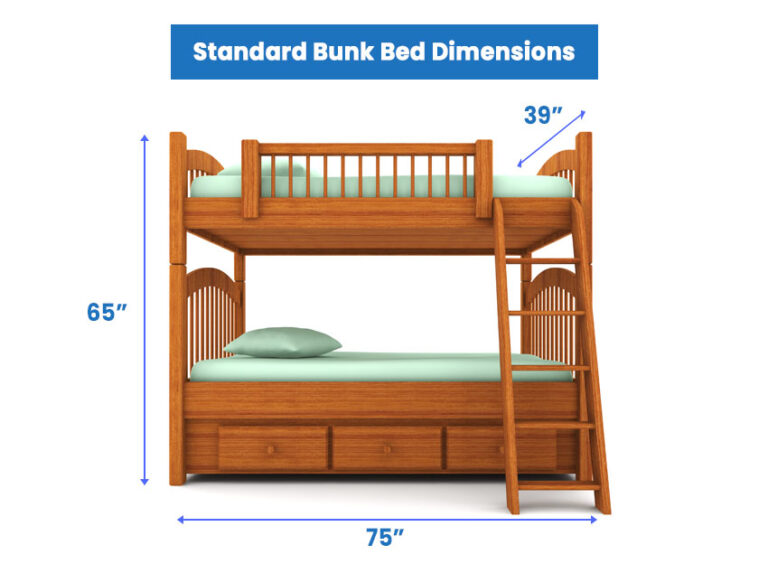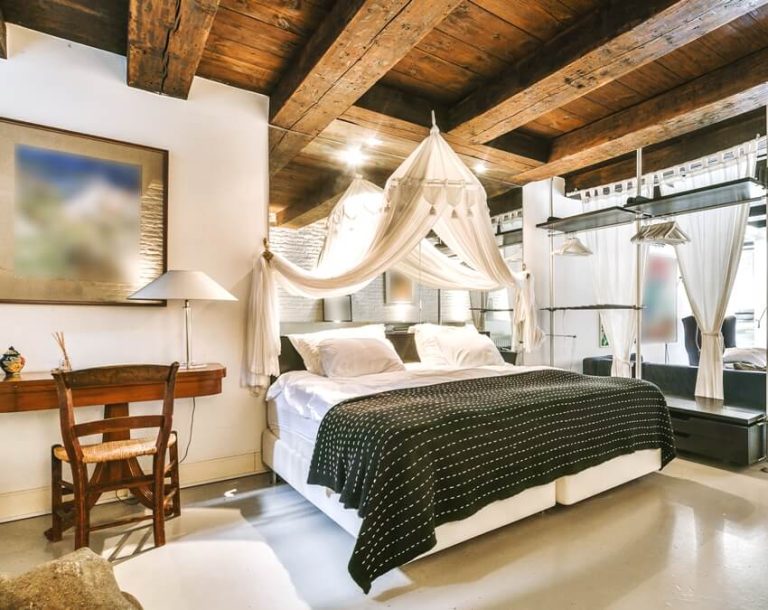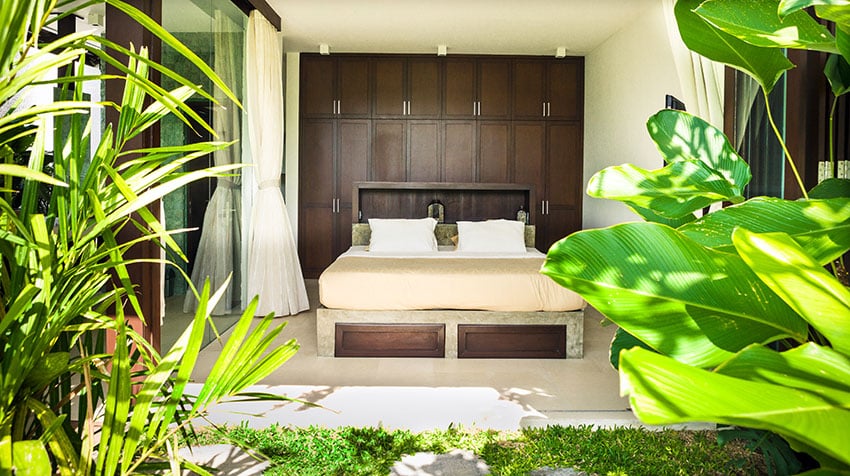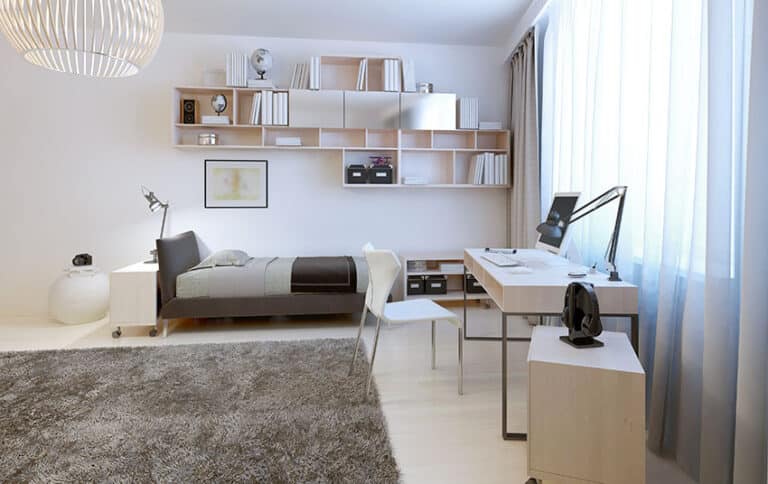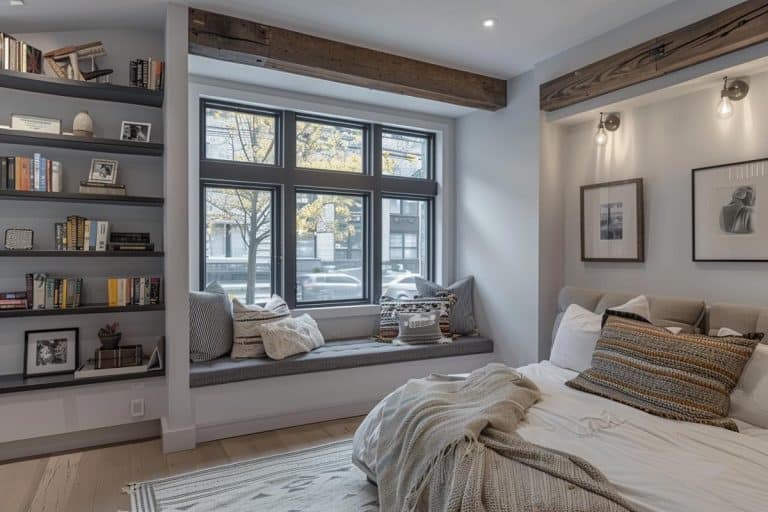Stylish Gray & Yellow Bedroom Designs
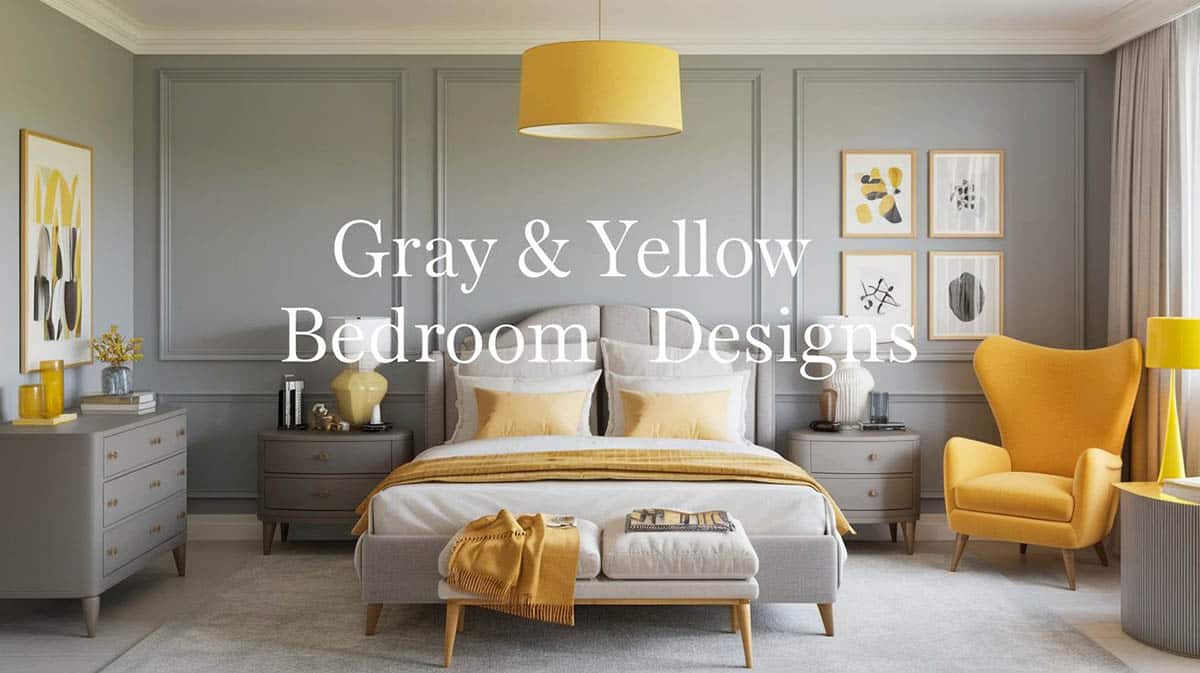
Gray is one of the most popular and well-used neutral colors. This color combination has even gained further popularity in the past few years as recent design styles and trends have a penchant for using grays. It is well-lauded for its flexibility, making it a safe color of choice, no matter what style you are trying to achieve. However, gray can be a little sombre or boring, especially when you don’t use an accent color. Yellow, on the other hand, has a bright, positive, and youthful energy, but it tends to be a bit overwhelming when used on large surfaces or in large quantities. The calm and cool gray, combined with the loud and bright color, tends to neutralize the negative qualities of each color and produce results that have the best of both worlds—the calm and elegant quality of gray and the fun and refreshing vibe of yellow.
Gray and Yellow Bedroom Ideas
Both of these colors have many different shades, and depending on your combination, they produce different looks and ambiance. You must always keep in mind the style and look you are trying to achieve before deciding among the many different shades of gray and yellow. There are many popular design styles nowadays, and although they tend to be more playful and experimental with their approach, certain shades of these colors match better with certain styles and work hand-in-hand with the other colors and finishes to achieve a specific ambiance.
Contemporary / Transitional Styles— These styles are usually used to describe contemporary spaces that use a few classic furniture pieces or draw inspiration from traditional styles and recreate them to give a more updated look. For these types of spaces, it is best to avoid loud colors and keep them toned down. For grays, dove gray and charcoal gray would work well with the style.
You can play around with different materials and textures to use it on, to give your design more depth and tactile aesthetic. The yellows would need to be more subdued and less loud if you want a more elegant feel. Mustard is a great shade for such purposes, as it has a more subdued feel while retaining a playful vibe. Gold in the form of metals, trims, satin and silk fabrics would also produce great results for contemporary spaces. You can use gold on small items such as picture frames, tassels, sculptures, pillow embroidery, and other subtle accessories.
Zen interiors – These designs are often boxy, angular and very symmetrical, using high contrast combination of finishes such as white and dark wengue. Because most of the warm tones would already be found on its wood elements, it is best to use cooler-toned grays such as arctic ice, slate gray, silver and other similar colors, to add more contrast to the colors. Meanwhile, you can use bright shades such as lemon zest, bumblebee, and Tuscany yellow in small quantities to add a bright, fun accent, or use subtler shades such as daffodil, cream, and French vanilla if you want to apply it in larger areas.
Minimalist interiors are often very linear, clean, and functional, with as few unnecessary items/decor as possible. White is usually the wall color of choice for this style, but dove gray is also often found as a wall color or an accent wall color. Cool-toned grays often work well with minimalist bedrooms. Lighter shades such as dove gray, smoke and silver are often used on larger areas like walls, floors or bedsheets, while darker shades are usually only used as accents and pattern colors. Since accessories are very minimal, you only have a few options where to inject yellow. Pillows, print patterns, trims, and throws are the most common items in minimalist interiors. You can, however, use any shade of yellow you prefer, as minimalist bedrooms often have a very neutral-colored base, giving you more leeway to play with accent colors.
Industrial Style Interiors – Industrial spaces tend to look a bit raw, rugged and masculine. Gray is definitely the go-to color for industrial spaces, as it is often found on elements such as raw concrete or sheet metal, both widely used for industrial style interiors. Industrial spaces also tend to lean towards monochromes, simply playing with different shades of grays and whites, so a touch of yellow would instantly give life to the space. Shades such as lemon, golden yellow, mustard and Scotchbutter would often be found on a few accent pieces such as throws, pillows, trims, fabric prints and other small accessories.
Modern Designs – modern interiors, particularly styles from or inspired by the modern period (roughly 1860 to 1970’s), tend to be a bit more bold and playful. In such styles, we can see a more liberal use of yellows. Bright, bold yellows, creams, and mustards are used uninhibitedly on walls, patterns, and prints. Gray is also often seen modern style bedrooms, and are commonly seen on metal elements such as stainless steel furniture, lamps and other accessories.
Yellow, Gray and White Bedroom
White works great with yellow as it helps tone down its vibrancy, yet allows you to keep that cheerful and youthful vibe this color is known for. Combining lots of white with yellow & gray also allows you to use the former in more bedroom areas as you see fit. You can add it as wall accent, on your bed sheets, on lamps and trims and even on your drapes. In this case, grays will be found on smaller quantities, but still nonetheless add more sophistication to the overall look of the bedroom. Here are some tips in designing a yellow, white and gray bedroom:
Play with textures – Use materials with different tactile qualities. Experiment with velvets, linen, cotton, suede, or metallics such as gold chrome, satin, silk and bronze. Try combining glossy finishes and textures with “rougher” matte finishes. This will create more depth give your design a more tactile appeal.
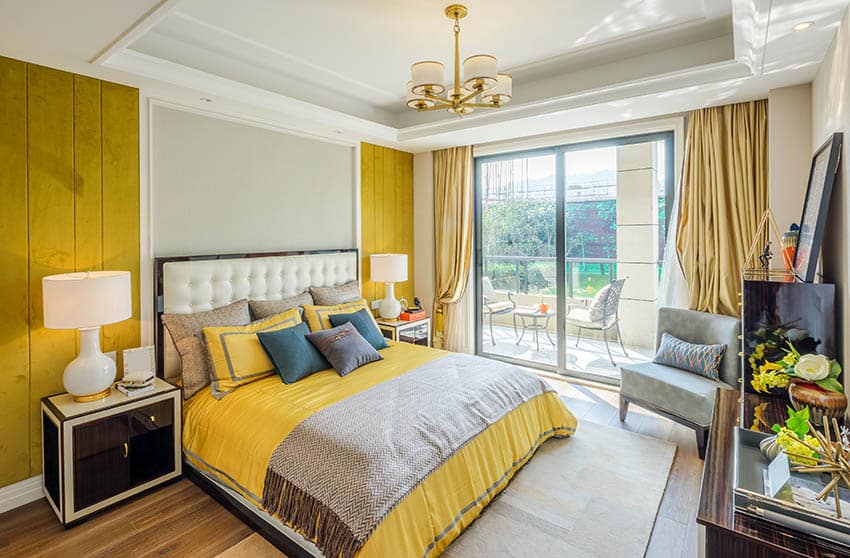
Experiment with patterns – Patterns shouldn’t always be limited to fabric patterns/prints. You can also inject patterns on the way you lay out finishes, like the accent yellow suede padded paneling above, which was divided into vertical panels of different widths, giving the illusion of a higher ceiling. The tufting on the headboard is also another example of a pattern, as well as the consistent “border” design found on both the bed sheet set and the nightstands.
Combine different shades – Don’t be limited to one shade of yellow, white and gray, you can also add more variety such as cream, light taupe, charcoal gray, etc, and even wood finishes to the mix. Additional colors, such as black, can also be added into the mix sparingly.
Gray-and-Yellow Bedroom Decor
The market abounds with decor in grays and yellows, although the latter is usually a bit more difficult to find than gray decor. However, due to yellow’s recent popularity, especially in shades like Mustard, you can now find more decorative pieces in yellow more easily.
Bold Prints – The easiest and cheapest way to inject grays & yellows in your existing bedroom design, is through the bedsheets and pillowcases. If you already have a gray wall, or a gray upholstered bed like this example, you can try to have a bit more fun with your bedsheets by using a unique bedsheet pattern, in combination with fun & brightly-colored accent pillows.
Minimalist prints – If you don’t feel like using too much patterns on your bed sheets, you can find bed sheet cover sets like this example, which has a simpler design and uses yellow in a more subtle way. The bright shades are only found in small quantities for this design, but due to its light gray backdrop, the yellow stands out better.
Furniture pieces – You can also apply yellow and gray to bigger items, such as furniture upholstery or paint. This is especially applicable to minimalist interiors, which don’t really have many accessories where you can place yellows. Furthermore, according to Digsdigs, you can choose between gray, creamy, black, or even yellow furniture, or mix these colors to complement the overall design.
Using gray as your upholstery material color makes mixing and matching with other colors easy, making its style more timeless, even when the season’s popular color changes. If you’re not afraid to grab attention and make a statement, then use yellows on big pieces such as this wingback panel bed. You can use more neutral-colored bed sheets (like white or gray) to tone down the boldness of the this color. Also be careful with the selection of yellow shades to pair with the bedframe, as not all options look good together.
Small furniture pieces – If you can’t commit to a bold and bright yellow bed frame, using smaller furniture pieces such as this yellow-upholstered bench is a good way to inject the color into the bedroom design. This way, you won’t have to feel the need to update or change your color scheme every season. This will also work if you use a yellow-painted desk chair or table in the design.
Area rugs – Carpets or area rugs are also an easy way to decorate your bedroom. Both modern patterns and more traditional styles are available in yellow, gray, and yellow/gray, making it easy to find one. Also, an area rug can be easily changed. If you decide to change the color scheme later or use a different design/pattern, you can easily roll your old area rug and replace it with your preferred rug.
Plants & Flowers – Yellow is a color easily found in nature. Instead of manufactured goods and accessories, how about experimenting with the use of yellow flowers in your decor?
Metals – Chrome gold, antique gold, and bronze finishes have gained popularity in recent years, so you can easily find small items and accessories in gold finish, such as mirrors, frames, lamps, and sculptures.
Using yellow, especially and gray for your bedroom interiors could sound daunting at first, but with the right shades and balance of colors, you can easily create a youthful gray & yellow bedroom design without making your eyes hurt with the overuse of the accent color. Combining these two colors works well with any design style, but brighter yellow looks best in more contemporary designs.


